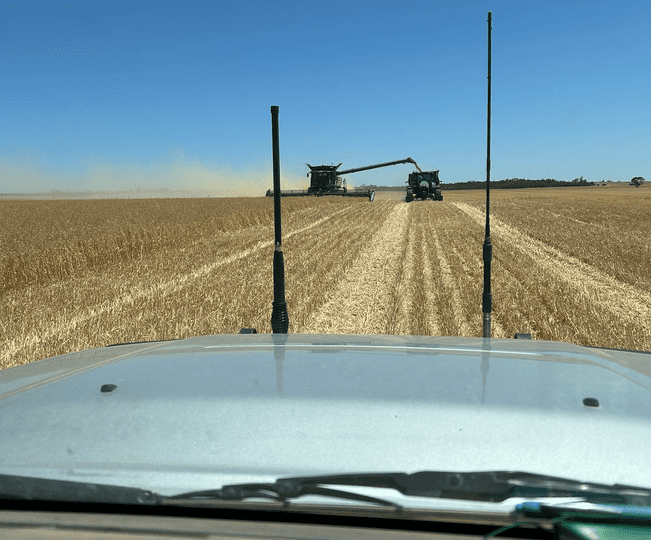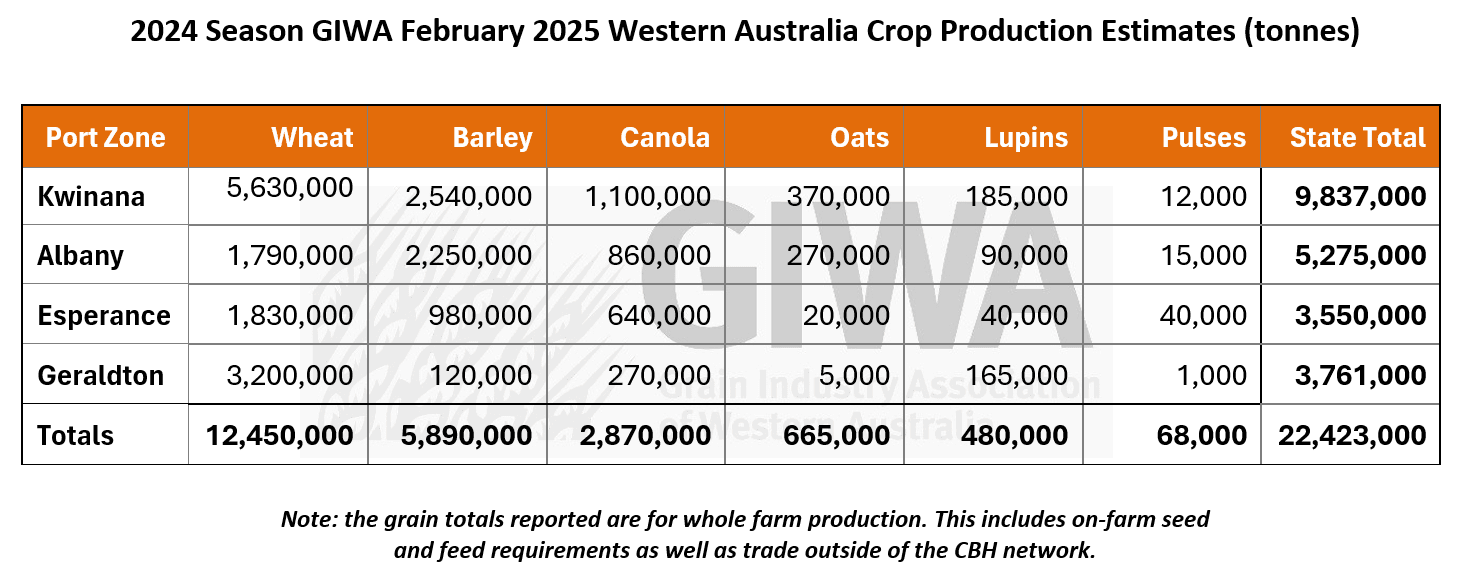
Harvesting cereals at the back end of harvest in January in the Kulin district. Photo: Tim Barndon
THE Grain Industry Association of Western Australia has finalised its estimate for the 2024-25 WA crop at 22.42 million tonnes (Mt).
This is up from 19.88Mt estimated in GIWA’s report issued in December, when harvest was still under way, and makes the harvest the third-largest on record for WA, behind 24Mt in 2021-22, and 26Mt in 2022-23.
Report author Michael Lamond has referenced the warmth of the winters in each bumper year, with 2021 the warmest winter on record, before 2022 was 7 percent warmer, and 2024 was warmer still.
“This trend of warmer growing seasons appears to be an overriding influence on grain production in Western Australia,” Mr Lamond said in the report.
Against this, 2023 was one of the coldest winters since the 1970s.
While 2023 was very dry in the northern agricultural zones, the rest of the state had decile 6-8 rainfall, but only 15Mt of grain was produced from a planted area of just over 8.3Mha.
“All three record production years were also record areas planted, with around 9Mha sown.”

Less sheep means more cropping
Mr Lamond said the trend of increasing cropped area was likely to continue due to the exodus of sheep from WA.
“For every 1 million sheep that leave farms and are not replaced, an extra 300,000-500,000ha are available for cropping, depending on the rainfall zone.”
Mr Lamond said the area of crop has increased in the medium to higher-rainfall zones of WA, where sheep have become less important.
“The change in crop area from 2023 to 2024 highlights this, with an increase of 7-10 percent in crop area being substituted from pasture due to the exodus of sheep.
“The crop area had been gradually increasing over the past five to 10 years; however, the contribution to the state’s tonnage is proportionally higher than the area suggests, simply because the majority of the area switching from sheep production to cropping is in the higher and more consistent rainfall zones.
“This is clearly demonstrated in the Albany port zone, where the tonnage produced in 2024 was the highest on record for that zone.
“It was a good year in that zone with virtually no frost or waterlogging, but the increased crop area also influenced this result.”
Help from fallow
Mr Lamond said while 2024 was a lower-decile rainfall year than 2021 and 2022, it had a very high area of crop sown on fallow.
“The area of fallow going into 2024 was around 1Mha where it normally is around the 300,000ha mark, and this helped crops yield close to or exceed long-term average grain yields in the lower-rainfall regions south of the Geraldton port zone.
“This high area of fallow in some degree insured those regions by limiting their risk from a low rainfall year.”
Mr Lamond said closer examination shows many small influences have added up to contribute to the end result of 2024-25 being a big season.
“The majority of these are human-driven rather than climate-driven, and the adoption of modern farming practices with quick adjustments by growers is aiding in these consistent results in widely different seasons.”
Mr Lamond said grain-yield estimates prior to harvest were up to 20pc lower than actual deliveries for some regions, and this would have caused significant delays at delivery sites if this had occurred five years ago.
“However, infrastructure upgrades resulted in most regions handling the large tonnages produced in the recent record years fairly easily.
“The rain just prior to harvest and during the early stages of harvest resulted in significant downgrades in grain quality.
“Testing for falling numbers also resulted in a slowdown in delivery cycles and dragged-out harvest operations in central regions of the state.”
Source: GIWA
Further detail on WA’s wheat, barley, canola, oat, and lupin crops can be found as part of the full report on the GIWA website.

HAVE YOUR SAY